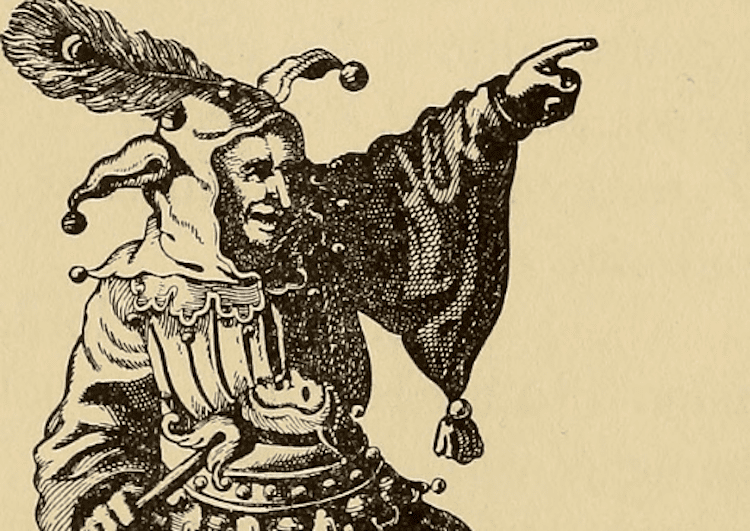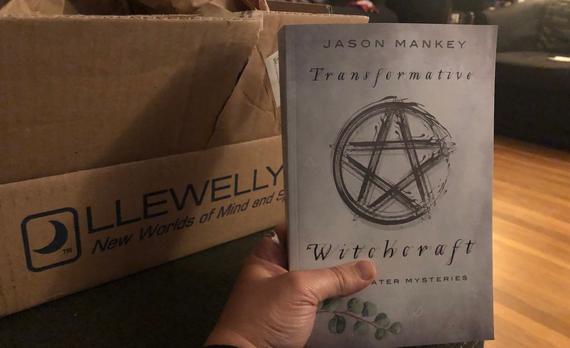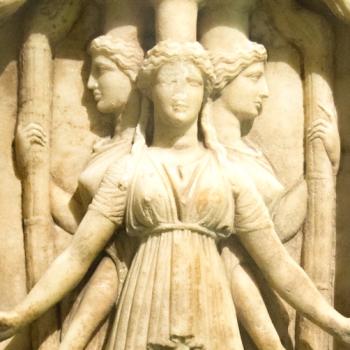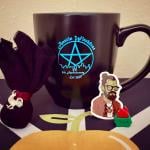I was recently asked about the origin of the phrases “cakes and wine” and “cakes and ale.” Both phrases are common in Modern Witchcraft circles and have been a part of the Craft for at least the last 70 years, and most likely before that. So why do we use these terms and what is “cakes and wine” all about?

The term “cakes and wine” in relation to Witch ritual first shows up in Gerald Gardner’s 1954 book Witchcraft Today. Gardner’s first reference to cakes and wine is to refute an author of the time who suggested that Witch ritual resembles that of the Catholic Church:
“There may be a fertility dance, but the other rites are simple, and with a purpose, and in no way resemble those of the Roman Catholic or any other Church that I know. True, sometimes there is a short ceremony when cakes and wine are blessed and eaten. (They tell me that in the old days mead or ale was often used.) This may be in imitation of the early Christian Agape, the Love Feast, but there is no suggestion that the cakes turn into flesh and blood. The ceremony is simply intended as a short repast, though it is definitely religious.”
Just a couple of pages later Gardner mentions Modern Witches performing a Yule ritual and ends that paragraph with “The Cakes Wine and Ceremony follows.” In other words, “cakes and wine” has been around since people started publicly identifying as Witches in the early 1950’s.
Cakes and wine is obviously shorthand for “communion bread and wine,” and if you’ve read anything about the Witch trials of the early Modern Period you might have noticed that Christians seemed convinced that witches were imitating and mocking the eucharist and the communion ritual. There are even stories of witches stealing “the hosts,” which generally taste awful so that seems completely nonsensical to me. Gardner references this ideas in 1959’s The Meaning of Witchcraft:
“The taking of wine during the rites is part of the ceremony; it consists usually of two glasses at the most, and is not intended to be a ‘mockery’ of anything, still less a ‘Black Mass.’ In fact, witches say that their rite of the ‘Cakes and Wine’ (a ritual meal in which cakes and wine are consecrated and partaken of) is much older than the Christian ceremony, and that in fact it is the Christians who have copied the rites of older religions.”
Cakes and wine were also a part of Crowley’s Gnostic Mass, a ceremony Gardner would have been quite familiar with (as pointed out in the comments below). This is another probably source for Gardner’s inclusion of the practice in his Witch rites. Its inclusion in the rites of Crowley, Gardner, occultists, and Witches over the years shouldn’t really be much of a surprise.
Cakes and wine (or “cakes and ale” which is my preferred term for reasons we will get to below) involves the sharing of food and drink, most often near the end of ritual. While the ceremony is called cakes and ale, any sort of food stuff works as a “cake.” Over the years my coven has used all manner of baked goods as cakes. Cookies, rolls, bread, and cupcakes all come to mind, along with fruits and vegetables. For ale we’ve used wine, cider, mead, beer, milk, and sparkling grape juice. Any kind of liquid can be used as ale, though wine is probably the most traditional. A completely alcohol-free cakes and ale ceremony is acceptable and is a must for covens with recovering alcoholics. (I have a great deal of sympathy here since my own mother is an alcoholic.)
At its core, cakes and ale serves as a celebration of the abundance and fertility of the earth. We are able to eat cakes because the earth provides us with grain and all the other things necessary to turn that grain into something edible. Most of us also see cakes and ale as a tangible gift from the gods.
Because they are a gift from the gods, cakes and ale serves as a moment of thanksgiving during Witch ritual. We thank the gods for what they’ve given us, and our thanks help to sustain them in turn. When handing out cakes and ale, I’m reminded of all the other gifts that my Lord and Lady have given me over the years (my coven, the Craft, and dozens more). We should be thankful for what we’ve been given, and cakes and ale provides an opportunity to do just that.
The Pagan group the Church of All Worlds has a saying that I’ve always found applicable to cakes and ale: “Water shared is life shared.” While my coven’s cup is generally filled with wine instead of water, the sentiment is still valid. Groups that share food and drink with one another generally stay together. Sharing cakes and ale is a way for a group to bond and forge the ties that will keep them together.
The phrase cakes and ale is a traditional English one that means “the good life,” (1) and there are few things better in life than enjoying good food and drink with chosen family while in a magickal space. The phrase first showed up in Shakespeare’s Twelfth Night in 1602 in the line “Dost thou think, because thou art virtuous, there shall be no more cakes and ale?” Because of the deeper meaning of the phrase cakes and ale, I find it preferable to cakes and wine, though the latter is nearly as common in witchy circles (with wine also being more common in my own chalice).

Though Gardner called the ceremony “Cakes and Wine” he also mentions “cakes and ale” in The Meaning of Witchcraft (where it was most likely picked up by other Witches):
“In the old days, they tell me, ale or mead might be used instead of wine, any drink in fact that had ‘a kick” in it,’ because this represented ‘life’. I wonder if this is why Shakespeare used the expression ‘cakes and ale” as a synonym for fun which was frowned on by the pious?”
Cakes and ale serves another purpose in ritual: it’s a great way to ground. After an hour of raising energy and praising the gods, putting some food and drink in the belly is an easy way to come back down to earth, so to speak. Eating and drinking help reconnect us to the physical world, which is so easy to forget about while in the magick circle. In the few instances when I’ve left a ritual without receiving cakes and ale, I’ve found myself a little out of sorts.
Before being consumed in ritual, the cakes and ale should be blessed by whoever is leading the ritual. When with my coven, I generally use the beverage that was activated in the Great Rite and then pass that cup around the circle. At large gatherings I use individual cups for everyone, blessing them with my athame, which still usually has a bit of the liquid held by the cup in the Great Rite. My wife suggests passing around the cup before the cakes to avoid food particles getting in the wine.
(Suggested by Astrea at Starlight Witch, and part of the “Ask Jason” series. Have a question for me? You can it a question on the Raise the Horns Facebook page, or via Twitter @panmankey.
Adapted from Transformative Witchcraft: The Greater Mysteries by Jason Mankey and published by Llewellyn Worldwide. Transformative Witchcraft should be available at any Witch store that has a lick of sense, and of course everywhere you might shop online.

NOTE
1. The Phrase Finder, https://www.phrases.org.uk/meanings/257200.html.













